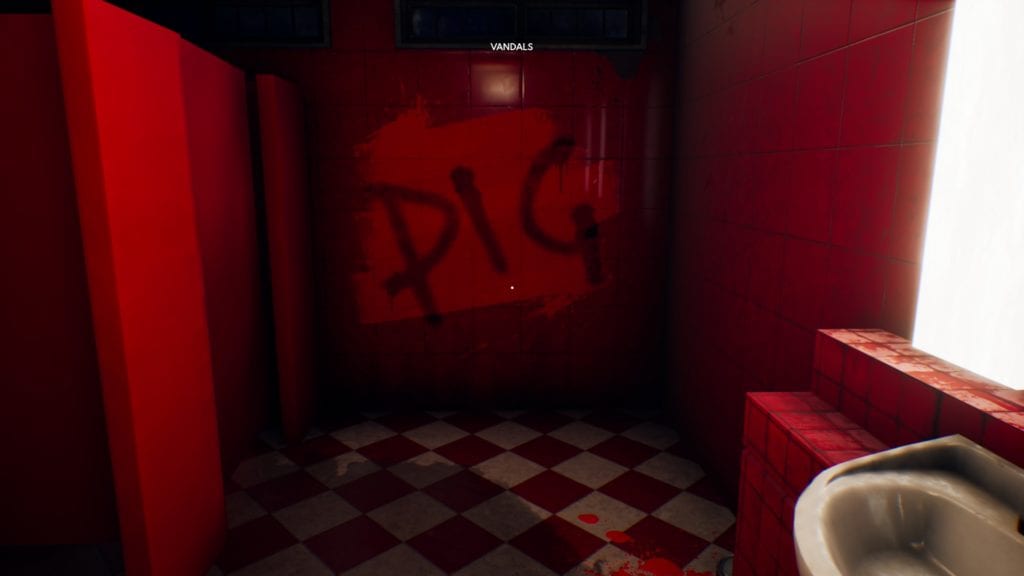

There’s supposed to be a spooky ghost in the hotel you find yourself and much of your time is exploring the hotel unrelated to the main topic.īut just as the player is about to uncover the ghost, The Suicide of Rachel Foster seems to drop the thread and move back to the main story leaving the player with an unsatisfying conclusion. So rather than exploring the serious topic at the core of its story, The Suicide of Rachel Foster instead decides to spend most of its runtime with horror tropes that don’t connect to the main story in a meaningful way. The problem is instead of tackling and examining the issue at the core of the game, The Suicide of Rachel Foster seems to leave this relationship unexplored and heavily ambiguous, only allowing an unreliable narrator to call it love, but unable to even say that they had anything other than an infatuation. In this case, the main character’s father seems to be infatuated with a sixteen-year-old. In this case, the wheel of tragedies seems to have landed on inappropriate relationships between adults and children. While the game is a typical “Walking Simulator” or exploration game it wants to tackle a large and sensitive issue like many of its contemporaries. It’s a game that feels like it loses its focus multiple times and yet struggles to deal with the very real and serious issues at its core. The effects, noises and creaks are expertly done throughout and it works brilliantly with the voice actors doing a great job with the script that is brightly performed.The Suicide of Rachel Foster is a problematic game for several reasons. Audio-wise there is an elusive and disarming soundtrack at play here, barely audible at times but always present. It reminds me a little of The Overlook Hotel from The Shining, with the same sense of foreboding and emptiness. Each location has been brilliantly designed with great attention to detail in signage, books and pictures located in the spaces. There’s just one location used throughout – the hotel with its many different floors and secret walkways and rooms. Overall I enjoyed the gameplay and the exploration tasks, but at times the pacing can feel very slow and The Suicide of Rachel Foster never moves through the gears to ever up the tension stakes. There are dialogue tree options in the conversations with Irving too, providing a couple of choices that determine how your relationship goes forward. Again it’s simple, but it’s a nice touch and gives a variation to the gameplay. Later on, you get to use items like a flashlight and a sound recording device to pinpoint a strange noise. You need to do this too as certain items are required in order to progress the narrative luckily there is a handy map to look at which will help you work out where you need to go in the hotel. You walk and explore at ease, picking up objects and examining them. It’s with him that you begin to learn the dark secrets that the hotel hides, and the uncomfortable truth about your father and what happened to Rachel Foster.Īs you would imagine for a game of this ilk, the gameplay is quite basic. Your only contact with the outside world is via the phone, to a FEMA agent called Irving who advises you and guides you through the following nine days.

As soon as you arrive though, the weather gets really bad and you are trapped in the hotel for the night. Your job is to go to the hotel and assess the assets and any damage to the hotel before you sell it. Set in the early ’90s in the mountains of Montana, just outside the town of Billings, it transpires that your father has died and you are traveling back to the hotel which he owned – a place where as a child you were brought up. You play the lead role of Nicole, viewing things in the first person throughout the game. Whatever it is though, I love these games and The Suicide of Rachel Foster fits nicely into this genre. The term development teams might well prefer would be that of “narrative-driven adventure” – something that is much more enticing. It’s a term that suggests there is little or minimal gameplay and that the player will be left going from point to point, triggering narratives. The ‘ walking sim‘ is a term that I could well imagine most developers hate and despise.


 0 kommentar(er)
0 kommentar(er)
